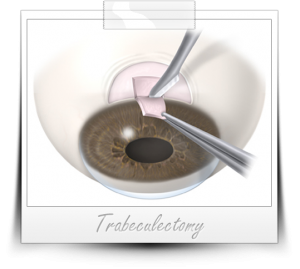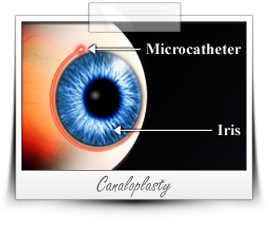Glaucoma Treatment
In the era of modern medicine, a glaucoma specialist is like a specialized military unit that has a well stocked and fully equipped armament of glaucoma treatments, ranging from medical eye drops, laser, artificial drainage devices, to the latest state-of-the-art surgeries. Common for all glaucoma treatment of course is to reduce the mounting fluid pressures in the eye of a patient. A glaucoma specialist considers the glaucoma battle a success once he rescues the patient from what could have been a sad fate of blindness.
Normally, a glaucoma specialist must first exhaust all medical means through eye drops to lower intraocular pressure before resorting to eye surgery. Although eye medications like beta blockers to prostaglandin analogs are very effective, some patients cannot tolerate their side effects. This includes the elderly, the diabetics and those with cardiovascular disorders like hypertension and heart failure. Add to the list are the non- compliant patients who are too lazy and make up all excuses not to take medications. More importantly, medication is not enough for patients who require a more rapid way to bring down the pressure. Hence, when medications are not enough, laser technology and or glaucoma surgery become the next two best options.
Laser can only do so much as to burning off the source of continuous fluid source in the eye. Laser functions like a lighted fire torch that burns any surface. However its low success rate and reverting to previous pressures in most cases limits its use.

For the past one hundred years glaucoma surgery was synonymous to the procedure called trabeculectomy. The surgery involves making a small slit into the surface of the eye in between where the transparent (cornea) and white (conjunctiva) part of the eye meet. The artificial opening created is meant to decompress the rising pressures inside the eye due to the malfunction or failure of its natural drainage system. The fluid is then eventually redirected to the small veins found in the conjunctiva. Though trabeculectomy has been done for years, its high rate of infection and scarring post-operatively remains one of its major drawbacks.
But with the advent of surgical breakthroughs in microsurgery and state-of the-art micro catheters and flexible scopes used in viscocanalostomy and canaloplasty, patients have less invasive and safer surgical options. Through these modern medical wonders, glaucoma surgeons can now operate on delicate and fine structures of the eye safely without endangering them from infection and injury common after eye surgery.
 Canaloplasty is one of these; the procedure uses a very minute catheter this as a hair strand, to open up the fluid drainage channel of the eye called the trabecular meshwork. But due to the technical difficulty of these novel procedures, only a few glaucoma specialists are qualified enough to do them. An eye doctor must go through a series of rigorous training or apprenticeship for the procedure. It will take a highly experienced glaucoma surgeon in micro catheter technology to do this. And she must have a proven track record of success and absence of complications.
Canaloplasty is one of these; the procedure uses a very minute catheter this as a hair strand, to open up the fluid drainage channel of the eye called the trabecular meshwork. But due to the technical difficulty of these novel procedures, only a few glaucoma specialists are qualified enough to do them. An eye doctor must go through a series of rigorous training or apprenticeship for the procedure. It will take a highly experienced glaucoma surgeon in micro catheter technology to do this. And she must have a proven track record of success and absence of complications.
References
1) Toris CB. Pharmacotherapies for glaucoma. Curr Mol Med. 2010;10(9):824-840.
2) Pederson JE, Gaasterland DE, MacLellan HM. Uveoscleral aqueous outflow in the rhesus monkey: importance of uveal reabsorption. Invest Ophthalmol. 1977;16:1008.
3) Bill A. The aqueous humor drainage mechanism in the cynomolgus monkey (Macaca irus) with evidence for unconventional routes. Invest Ophthalmol. 1965;4:911.
Krohn J, Bertelsen T. Light microscopy of uveoscleral drainage routes after gelatine injection into the suprachoroidal space. Acta Ophthalmol Scand. 1998;76:521-527.
4) Klemm M, Balazs A, Draeger J, et al. Experimental use of space-retaining substances with extended duration: functional and morphological results. Graefes Arch Clin Exp Ophthalmol. 1995;233:592-59
5) Ozdamar A, Aras C, Karacorlu M. Suprachoroidal seton implantation in refractory glaucoma: a novel surgical technique. J Glaucoma. 2003;12:354-359.
5) Ozdamar A, Aras C, Karacorlu M. Suprachoroidal seton implantation in refractory glaucoma: a novel surgical technique. J Glaucoma. 2003;12:354-359.
Don’t delay getting checked for glaucoma.
Make an appointment with an eye doctor in your area now. If you live in the greater Los Angeles area and would like Dr. Richardson to evaluate your eyes for glaucoma call 626-289-7856 now. No referral required. Appointments are available, Tuesday through Saturday.


